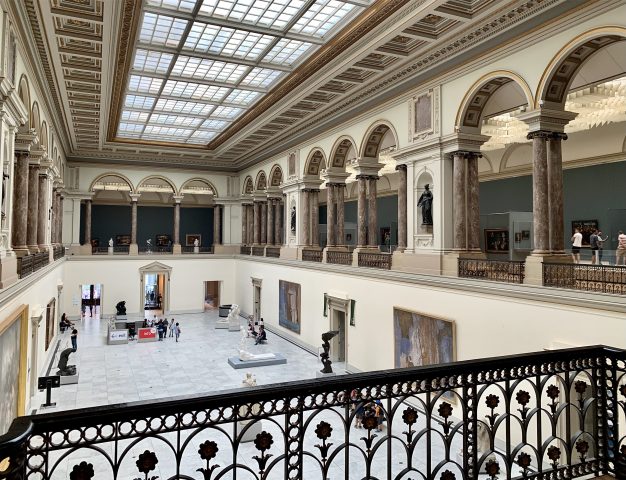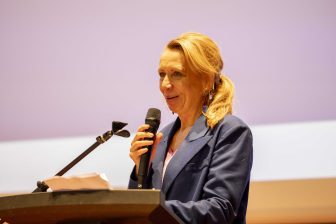
Join us in Brussels for Child in the City World Conference 2023
The centre of European democracy, Brussels, will be the host city for this year’s 11th Child in the City World Conference.
The International Child in the City Foundation, together with the Brussels Capital Region and Flemish Community Commission, is delighted to invite you to our 2023 event.
Once more we will be focusing solely on how we can all best work for the interests of children in cities everywhere. Building the Future is the theme chosen by our Scientific Program Committee (SPC) for this year’s conference, which takes place at the city’s Museum of Fine Arts from November 20-22.
Lia Karsten, President of the SPC, said: “With this Brussels conference we aim to give a positive boost to how we can best make this world a better place for future generations. We all know that the world today is, in parts, a grim environment. Wars, earthquakes and climate change are just a few of the threats we are facing. But that only makes it more urgent to work towards a better future, not only for but in close dialogue with the younger generations.”
‘Valuable opportunity to share best practice’
The CITC Foundation, through its interdisciplinary approach, is able to engage different disciplines and open up new and promising perspectives. This conference is a valuable opportunity for child professionals, city planners, academics, social workers, designers and policymakers to share knowledge of best practice and highlight new insights on how to build child-friendly urban futures.
Under the overarching theme of Building the Future, our flagship event will focus specifically on five key topics:
- Building on Creativity
Children’s creativity is an important tool to shape the future. On one hand we need to stimulate urban conditions that develop children’s skills to express themselves in creative ways. Artists, museums and schools have a big responsibility to ensure cultural education for children and youth. And on the other hand, we want to apply children’s creative capital to develop innovative solutions for the many problems society is facing today. How can we ensure that the creativity within young people is both developed and translated towards the shaping of a better future?
- Building on intergenerational cohesion
Many cities struggle with a lack of cohesion and lack of space. Socially, it is increasingly important to replace age-specific policies with policies that stimulate encounters between all age groups. The future child-friendly city should include teenagers and older people, not to mention grandparents. Spatially, there is an urge to serve different age groups one at a time. In today’s context of ever-growing city densities, it is necessary to focus on intergenerational spaces. How can social and spatial interventions facilitate intergenerational contact and social cohesion?
- Building on (international) solidarity
Current times are hard times for many children growing up in Europe and further afield, with migration creating a huge flow of families and children across the globe. We must all work to overcome the difficulties with integrating newly-arrived citizens. What does it mean for children to grow up in disadvantaged neighbourhoods and how can we improve their living conditions? How do we build on international solidarity that also supports children growing up in other parts of the world where they struggle with war, natural disasters and hunger?
- Building on participation and democracy
In this 11th version of the Child in the City World Conference we are particularly keen that children’s voices should be heard. That includes much more than ‘simple’ youth participation. How can we educate children towards becoming responsible members of democratic societies? This topic is about young people’s citizenship, and so it is particularly fitting that we are meeting in the European capital, Brussels. What can European citizenship bring to young people, and what can bring young people themselves to Europe?
- Building on young people-friendly urban space
Outdoor play and opportunities for children’s freedom of movement are still falling. That should not be the case. It is a big challenge in urban planning to make urban space accessible to the youngest citizens in sustainable ways. What good examples do we see of green urban spaces, safe bicycle lanes, attractive playgrounds, smart school yards, and well-designed childcare facilities that really support children’s development and young people’s freedom of movement?
Call for Abstracts
Our conference would not be what it is of course without your expert input, and so we invite you to respond to our ‘Call for Abstracts’, which is your chance to speak to your peers about the work you are doing on behalf of children.
Three types of presentations and three categories:
Our conference will support three types of presentations: paper, poster and panel discussions/round tables on specific topics. We would also like to know whether your abstract refers to an academic presentation, a presentation of a new policy/policies or an example of good practice.
The committee also welcomes a small number of presentations which are not strictly related to the conference’s five key topics as outlined above. We would be delighted to receive innovative, high quality abstract proposals that will be grouped together in our ‘varia workshops’.
All abstracts must be submitted before 00:00 hours, May 31, 24.00 hours Central European time (CET)
Criteria
Abstracts should be submitted in English and not exceed 200 words. Members of the Child in the City Foundation’s Scientific Program Committee will review each abstract under the following criteria:
- Title, names and affiliations of the presenter (s) should be mentioned .
- Type of presentation (paper, poster, panel).
- Category: academic, policy or good practice presentation.
- Content: what is the issue you want to discuss and to which of the five topics does it refer?
- Evidence: What data are your conclusions and/or acclaimed success of projects based on?
- Creativity and innovative new insights.
- Language: logical argumentation in correct English
For more information please visit the Child in the City World Events website at https://events.childinthecity.org/ or email Manouk Brouwers, Event Manager, at manouk.brouwers@promedia.nl




